Healthcare is one of the most significant considerations in the Western world. While Canada’s situation differs from that of the US, as well as EU nations and even the UK, there are issues affecting the health care industry of Canada, including long wait times to receive treatment. How much does Canada spend on healthcare every year? According to the Canadian Institute for Health Information (CIHI), in 2019 Canada is expected to spend $264 billion on health care, which equates to $7,068 per Canadian citizen.
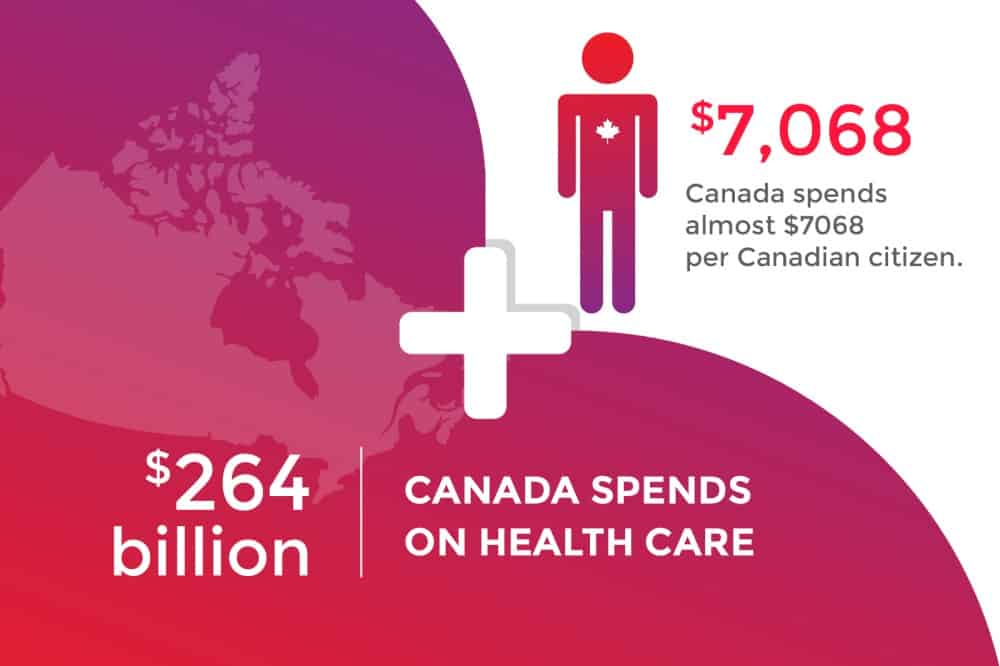
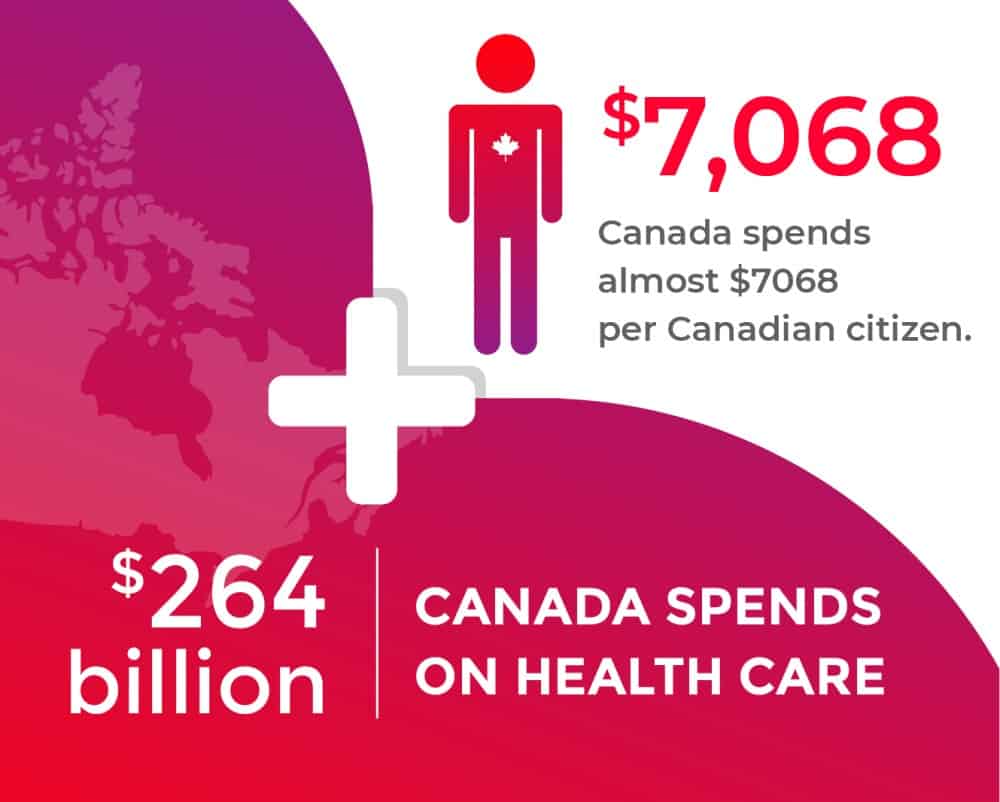
Canada Health Care Spending Statistics and Figures
To put how much Canada spends on healthcare into perspective, let’s break things down a little bit more.
- Total: $264 billion
- Per Person: $7,068
- Growth: 4.2% increase over previous year
- % of GDP: 11.6
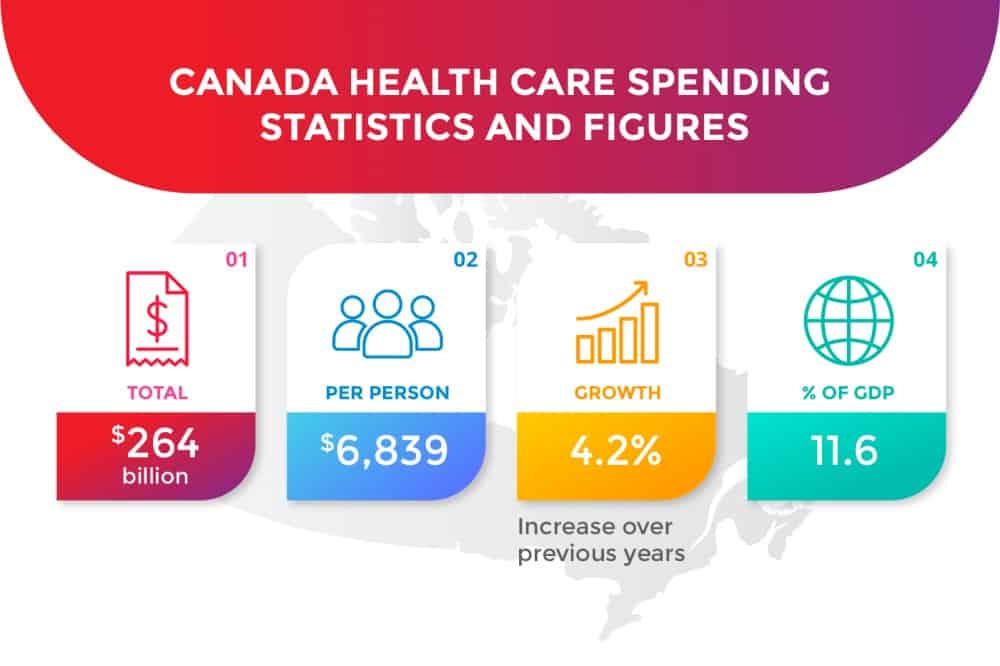
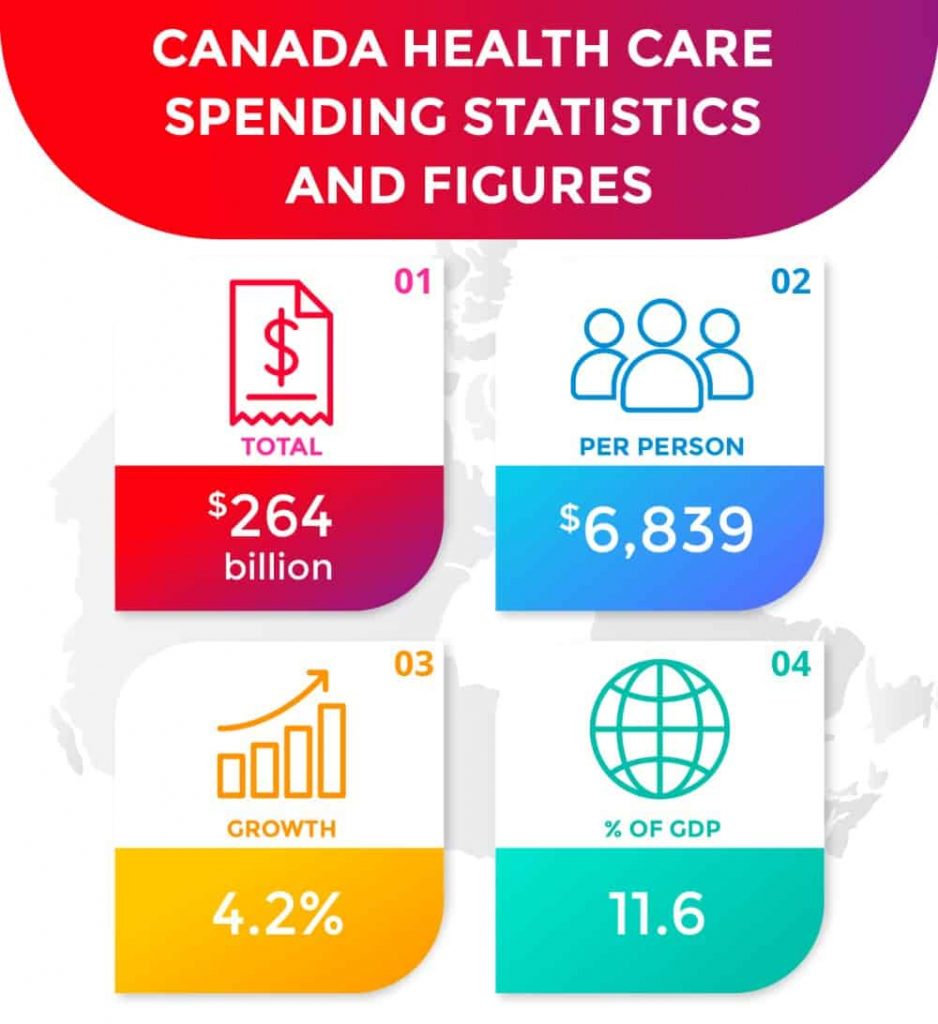
Canada’s healthcare spending has steadily increased over time. While the overall trend has been upward, there are several outlying years. For instance, the most significant jump was in 2010 when healthcare spending in Canada actually accounted for 11.6% of the nation’s GDP. It reached a low point in 2015 before beginning to climb once more. 2019’s percentage was forecasted to be slightly higher than 2018’s numbers.
How Is Canadian Health Care Funded?
Canadian health care is funded through a combination of different methods, including provincial and territorial government contributions (public) and private out of pocket costs. In 2018, 31% of Canadian health care costs were covered by the private sector, with 15.4% being out of pocket costs, 12.4% being private insurance, and 3.3% rated as “other”. In comparison, governments covered 64.2% of the costs, with 4.8% coming from other public sources. Note that in many years, the split was much higher than 69/30 (public/private) as it was for 2018. For instance, it was a 70/30 split in 2016 and 2010.
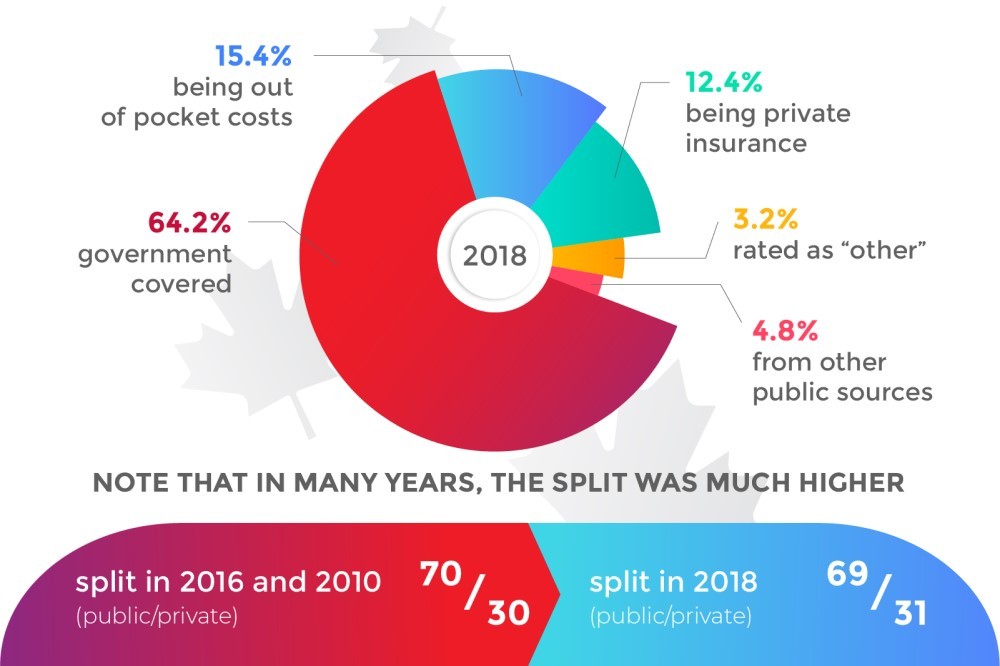
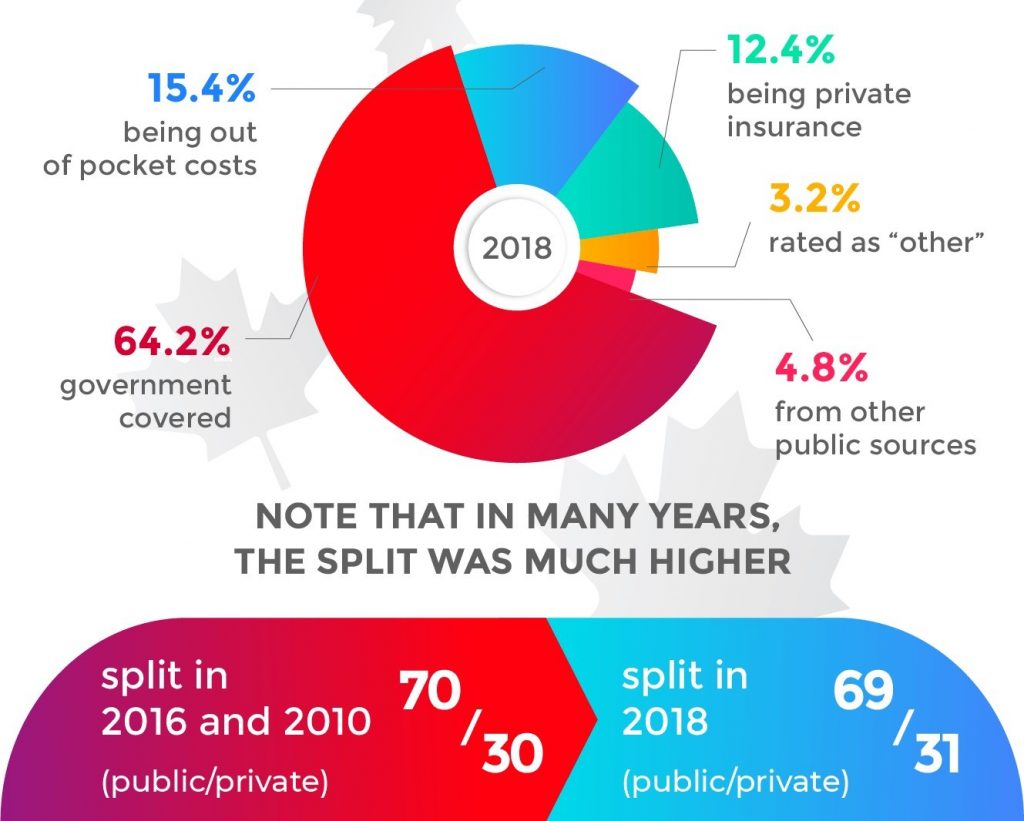
How Does Health Care Funding in Canada Work?
Unlike the United States, Canada has a single-payer healthcare system. This “free” healthcare is funded with Canada’s tax dollars. However, there are some notable areas that are not covered, such as prescription drugs, long-term care, and in-home care. Dental care is also not covered. It is left to territory and provincial governments to come up with plans that offset the costs of these areas for citizens, and the programs vary significantly from one area of the nation to another. Private insurance plays a role in most areas, but some governments offer stopgap solutions, such as Ontario’s prescription coverage for those under the age of 24. In addition to taxpayer funding and private insurance policies for areas not covered by the Canada Health Act, charitable funding also plays a role, particularly in financing hospitals and other medical facilities.
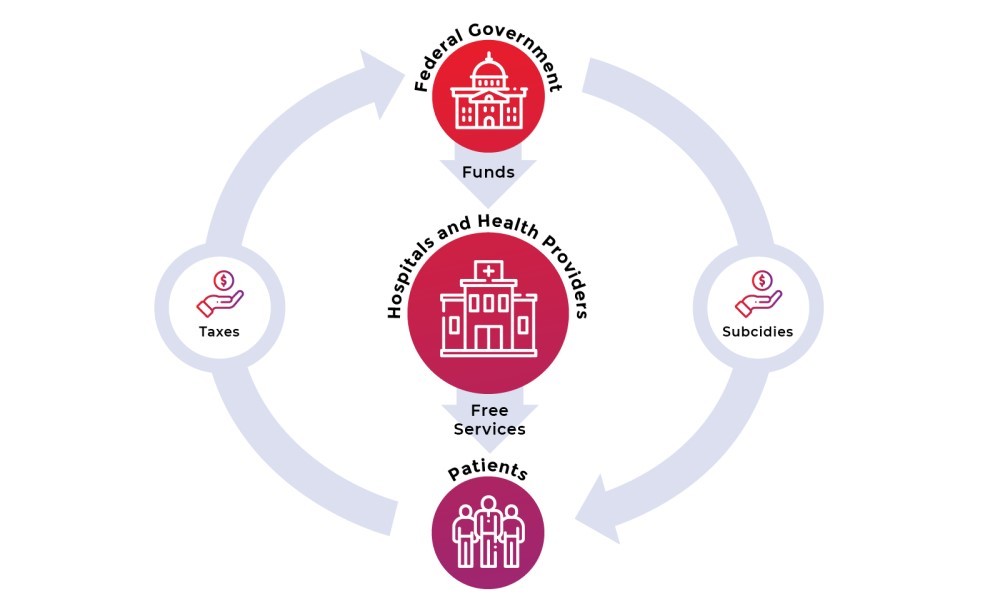
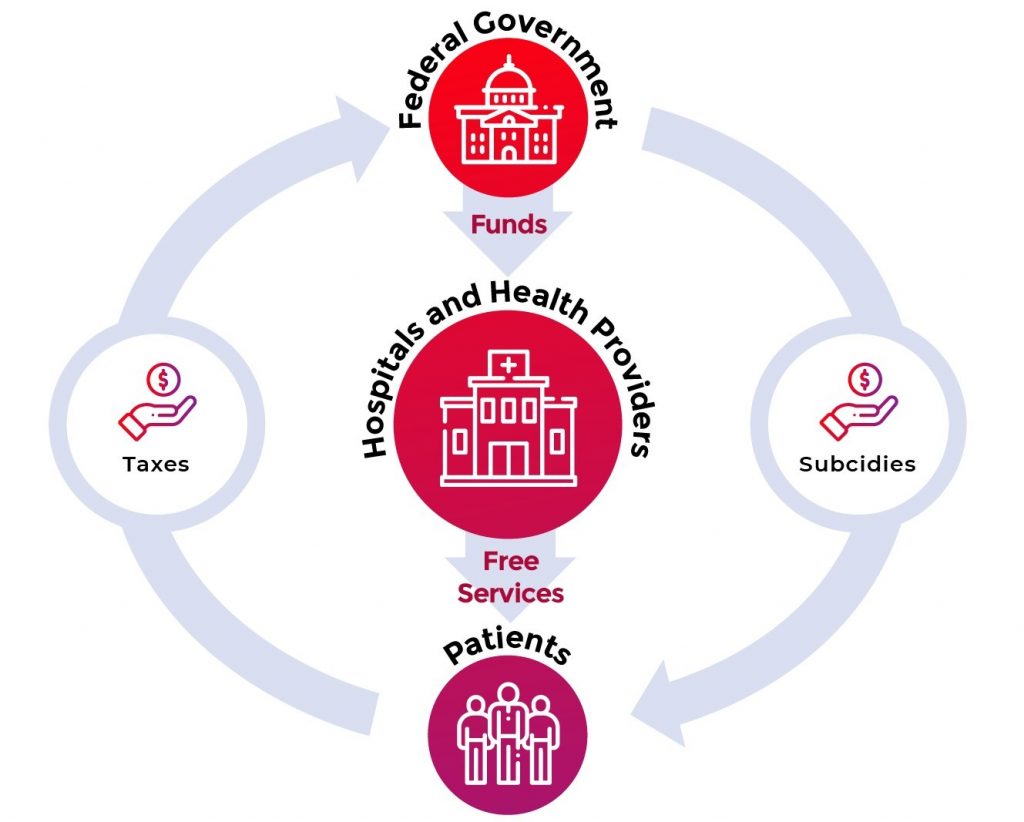
The majority of funds comes from taxpayers.
Overall, the flow of health care funding in Canada is from the federal level to the provincial and territorial level. The Canadian Health and Social Transfer ensures that funds allocated to each area are made available and payments are made via both cash contributions and tax transfers.
Key Factors in Health Care Funding in Canada
When answering the question of how much Canada spends on healthcare each year, we also need to break down where that money is going. The CIHI reports that hospitals accounted for 28.3% of healthcare spending, with an average cost of $1,933 per person and a growth rate of 3%. Prescription drugs accounted for 15.7% of spending, with a cost of $1,074 per person and a growth rate of 3.2%. Finally, physicians accounted for 15.1% of Canadian health care spending, with a cost of $1,032 per person and 2.2% growth.
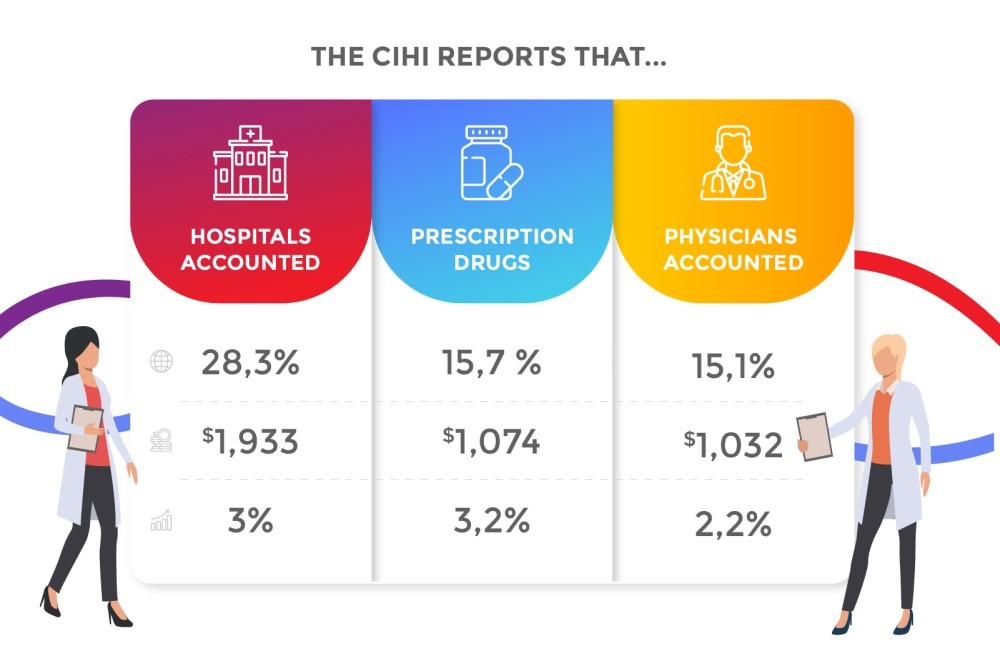
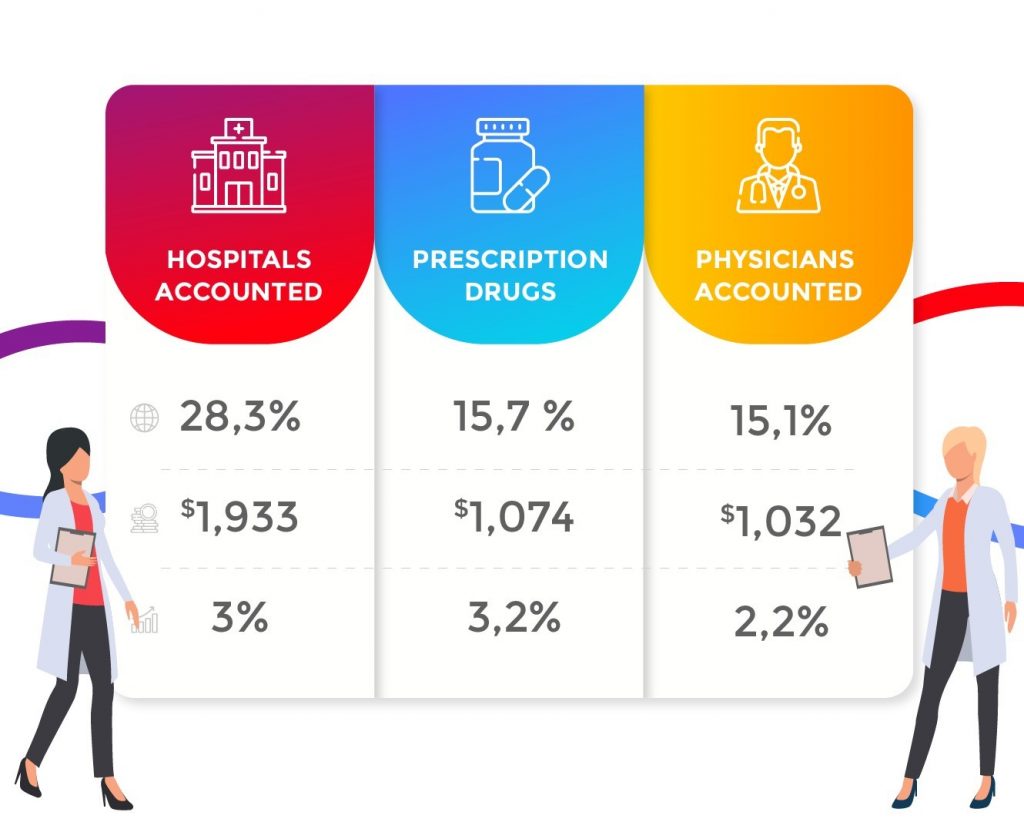
How does that break down across the various industries? Actually, there are some interesting trends. For instance, with 2018’s numbers, we can see that hospital budgets have actually decreased. This is in direct proportion to less money being allocated to them due to financial restraint programs. In response to budget cuts, more and more hospitals are offering out-patient treatment in situations that would have once required in-patient treatment. Also, hospitals note that staff compensation actually accounts for about 60% of their budgets.
The Future of Canada Health Care Spending
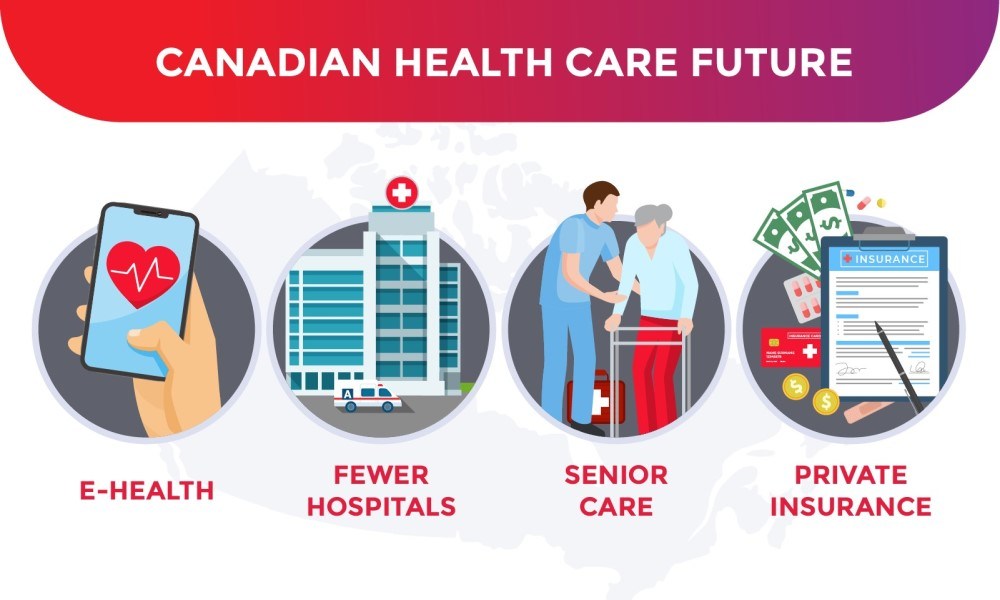
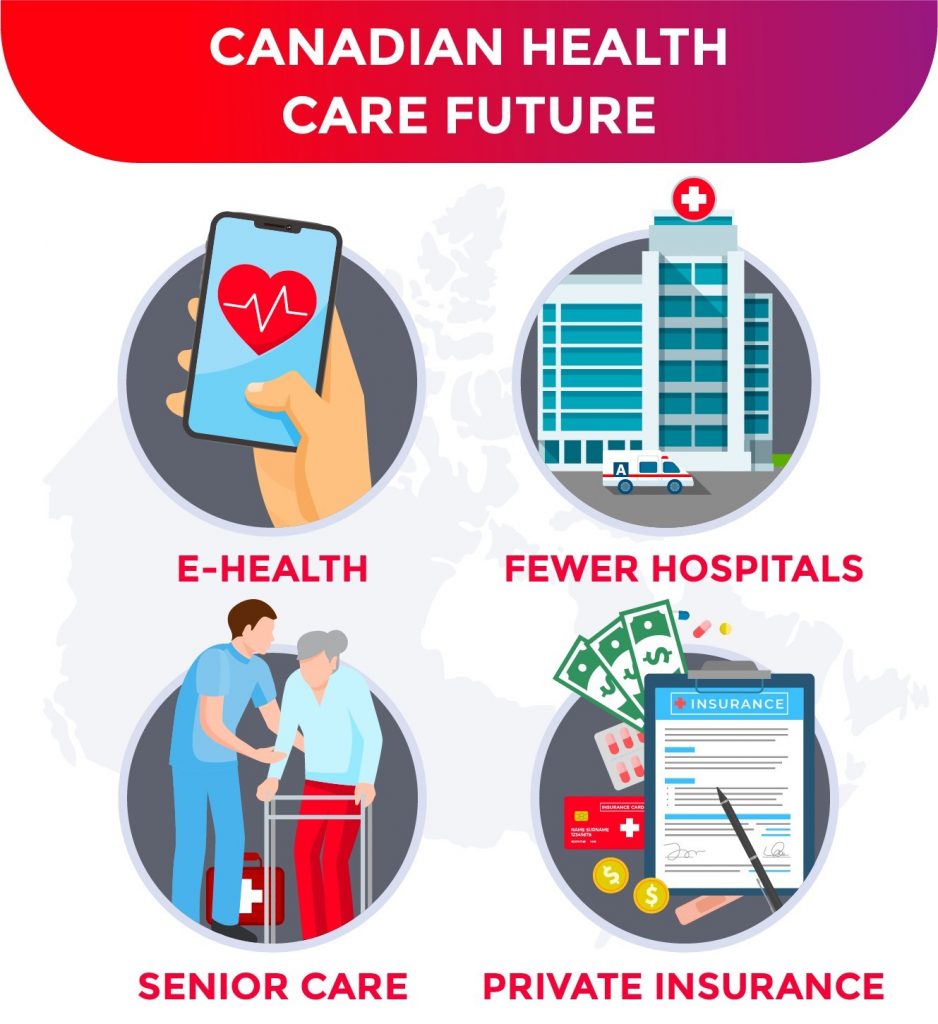
Healthcare industry constantly changes and evolves.
When attempting to determine how much Canada spends on healthcare, it is important to look beyond the immediate costs and toward future trends. The healthcare industry is not static. Far from it – it is a dynamic marketplace that is affected by multiple factors, including an aging population, hospital agglomeration, inflation, the ability to negotiate lower prices with pharmaceutical companies, and the like. In 2019, the Canadian healthcare industry has evolved and changed.
- eHealth: Electronic health technologies will play a larger and larger role in Canada health care spending, including telehealth and the storage and transmission of electronic health records. While this will increase spending, it does offer benefits to Canadians, including more convenience, improved safety, and other advantages.
- Fewer Hospitals: The current trend of hospitals agglomerating is expected to continue. This will reduce competition between independent hospitals, although it may lead to less readily available access to medical care in some areas of the nation.
- Senior Care: Expect to see a larger and larger portion of Canadian healthcare funding go toward senior care. Like the US, Canada has a significant aging population that requires access to different care solutions than do younger citizens.
- Percentage of Private Funding: Some experts indicate that the share of health care costs currently covered by private insurance may grow in the future.
In Conclusion
When it is all said and done, the Canadian healthcare industry is funded by government contributions, as well as charitable contributions, and private insurance. It is a unique combination that manages to help ensure that Canadians have access to affordable healthcare throughout much of the nation. While the system is not perfect, Canadians are rightfully proud of what they have built and the benefits the system offers.
Other interesting articles:

